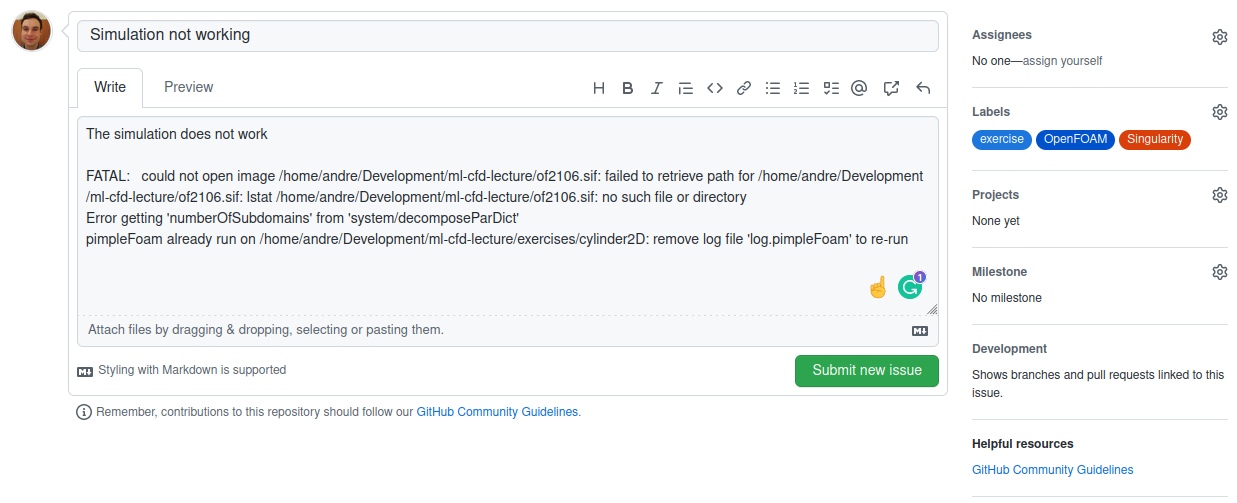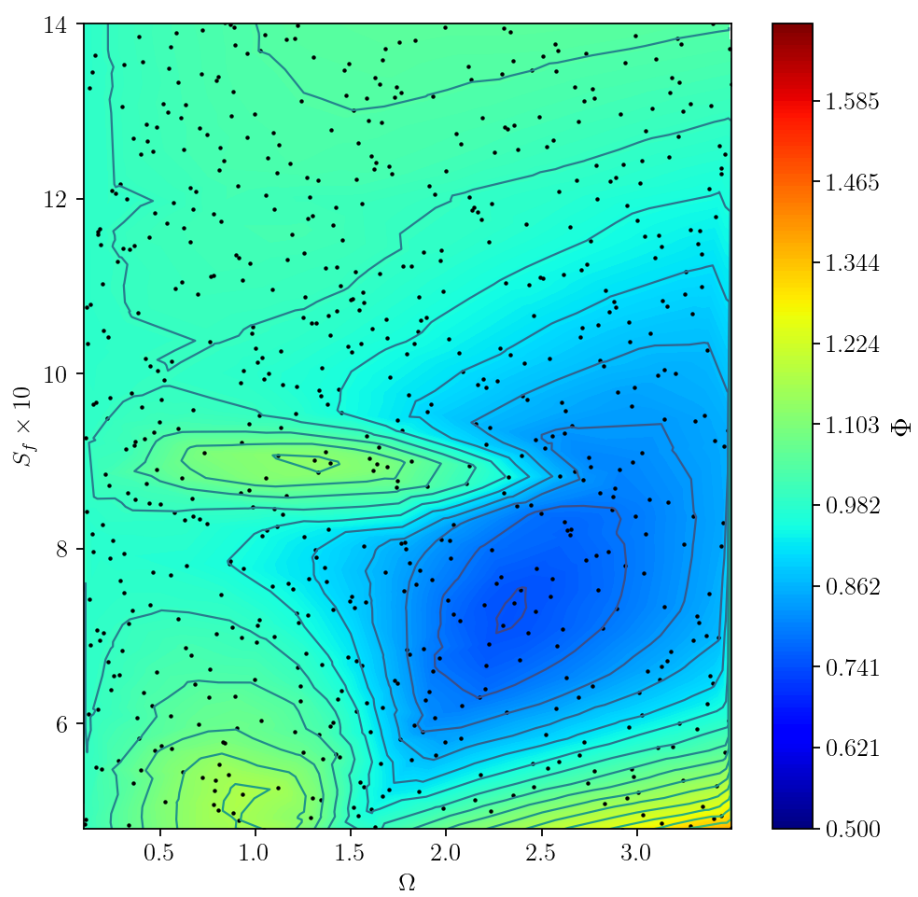Course overview and introduction
Andre Weiner
TU Dresden, Institute of fluid mechanics, PSM

These slides and most
of the linked resources are licensed under a
Creative Commons Attribution 4.0
International License.
Outline
- course logistics
- reporting issues
- ML in fluid mechanics
- lecture projects
- technology stack
Course logistics
Times and location
- lecture: Tuesdays 1:00-2:30pm
- exercise: Wednesdays 7:30-9:00am
- location: ZEU/114/H
Refer to OPAL for a detailed schedule of all lecture and exercises.
Workload and requirements
- 5 CP, ~150h workload
- 13 lectures + 13 exercise sessions
- $150h-13*3h \approx 110h$ of self-study
- prior ML/CFD knowledge is a plus
- programming knowledge is essential
- written exam 1.5h
Resources and communication
- slides and exercises available on GitHub
- all resources are updated regularly
- getting help: GitHub issues (preferred), mail
- general feedback: mail/OPAL
Exercises
- exercise session: short introduction and Q & A
$\rightarrow$ mostly self-study - exception: exercise 0 (Python intro)
- remote support by course assistant
Github issues
learn to communicate professionally
Do you have a Github account?
Note: a Github account is not required but recommended.
How to open a new issue:
- go to the Github repository
- click on Issues (top left)
- use the search to check if a similar
issue has been reported already - if not, open a New issue (top left)
- report the issue and click on
Submit new issue (bottom right)

How to write an issue report:
- precise title
Incorrect eigenvalue formula lecture 2 slides - short description
Comparing the formulas between script and slides of lecture 2, I found an inconsistency. - precise problem description
The formula reads $\mathbf{XQ}=\mathbf{Q\Lambda}$ in the script and $\mathbf{XQ}=\mathbf{\Lambda Q}$ on the slides.
Optional tips for writing issues:
- expected behavior
I expected a 3x2 tensor but got a 2x3 tensor. - suggestion for correction
I believe the correct formula is $\mathbf{XQ}=\mathbf{Q\Lambda}$. - link related issues using #issue_number
The problem might be related to issue #6. - provide details about your setup
I am running Ubuntu 20.04 using WSL.
See also: 45 Github Issues Dos and Don't
Using ML in fluid mechanics
the study of fluid mechanics ...
- produces large amounts of complex data
- requires data or representations thereof
ML ...
- finds patterns in data
- creates useful representations of data
primary (physical) data
- flow snapshots (volume, boundaries, slices)
- derived quantities (averages, force coefficients)
- ...
secondary data (the rest)
- log files (residuals, quality metrics)
- setting (numerical schemes, physical models)
- ...

Progression of snapshot size in direct numerical simulations (DNS).
Simulations become more and more sophisticated:
- turbulence models
- transport models
- equations of state
- mixture models
- linear solver settings
- discretization schemes
- ...
$\rightarrow$ closure models and decision making required
Examples: surrogate modeling, flow analysis
Examples: boundary conditions, material models
Examples: scale/complexity-reduced modeling
Examples: flow control, parameter optimization
ML is not a magic problem solver
matching given inputs and continuous outputs
matching given inputs and discrete outputs
finding low-dimensional representations
grouping similar data points
learning optimal control in dynamic environments
What type of ML could be helpful in the following scenarios?
Creating a transport model $\mu (T)$ based on experimental data ...
- regression
- classification
- clustering
- dimensionality reduction
Predicting the impact behavior of a droplet on a surface ...
- regression
- classification
- clustering
- dimensionality reduction
Switching between two turbulence models in a RANS simulation ...
- regression
- classification
- clustering
- reinforcement learning
Finding coherent structures in turbulent flows ...
- reinforcement learning
- classification
- clustering
- dimensionality reduction
Closed-loop active flow control of the flow past a cylinder
- regression
- reinforcement learning
- clustering
- dimensionality reduction
hints to create sensible ML applications
- domain knowledge is essential
- ML shines in higher dimensions
- combination of multiple ML techniques
- combine the strengths of ML and
standard (classical) approaches
Lecture projects
Lectures 2 & 3: write a CFD solver from scratch
Lectures 4 & 5: learn approximate velocity profiles
Lecture 6: predict the stability regime of rising bubbles
Lectures 7: compute mass transfer at high Schmidt numbers
Lectures 8 & 9: find coherent structures in turbulent flows
Lecture 10: create a reduced-order flow model
Lecture 11: optimal open-loop flow control

Lectures 12 & 13: learn an agnostic control law from scratch
